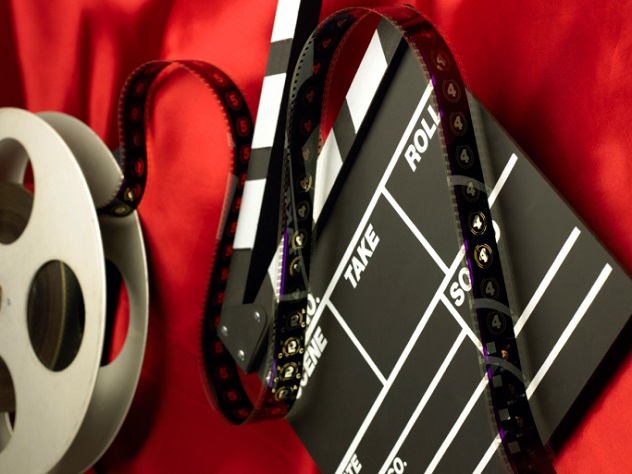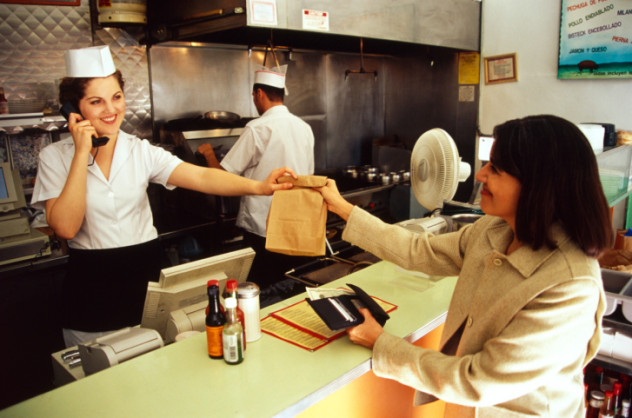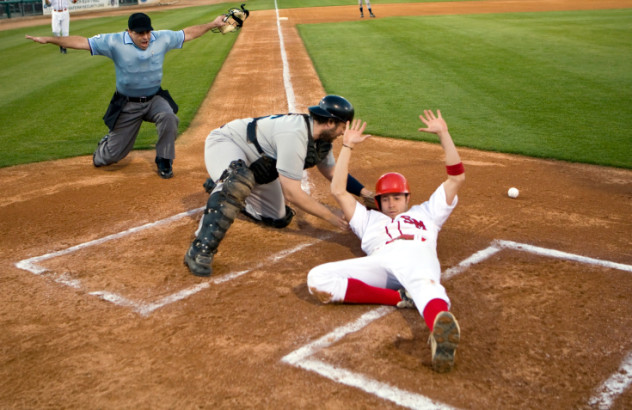 Weird Stuff
Weird Stuff  Weird Stuff
Weird Stuff  Mysteries
Mysteries 10 Tragic Disappearances and Deaths in Joshua Tree National Park
 History
History 10 Ways Childhood Really Sucked in the Old West
 Music
Music 10 Name Origins of Famous Bands from the 1990s
 Religion
Religion 10 Biggest Turnarounds by the Catholic Church
 Weird Stuff
Weird Stuff 10 Unbelievable Times Laws Had Unintended Consequences
 Humans
Humans Ten Historic Women Who Deserve Way More Credit Than They Got
 Movies and TV
Movies and TV 10 Films That Spawned Major Lawsuits
 History
History Ten Times Towns Were Wiped Off the Face of the Earth
 Creepy
Creepy 10 of the Most Disturbingly Haunted Public Houses in the UK
 Weird Stuff
Weird Stuff 10 Niche Subcultures That Are More Popular Than You Might Think
 Mysteries
Mysteries 10 Tragic Disappearances and Deaths in Joshua Tree National Park
 History
History 10 Ways Childhood Really Sucked in the Old West
Who's Behind Listverse?

Jamie Frater
Head Editor
Jamie founded Listverse due to an insatiable desire to share fascinating, obscure, and bizarre facts. He has been a guest speaker on numerous national radio and television stations and is a five time published author.
More About Us Music
Music 10 Name Origins of Famous Bands from the 1990s
 Religion
Religion 10 Biggest Turnarounds by the Catholic Church
 Weird Stuff
Weird Stuff 10 Unbelievable Times Laws Had Unintended Consequences
 Humans
Humans Ten Historic Women Who Deserve Way More Credit Than They Got
 Movies and TV
Movies and TV 10 Films That Spawned Major Lawsuits
 History
History Ten Times Towns Were Wiped Off the Face of the Earth
 Creepy
Creepy 10 of the Most Disturbingly Haunted Public Houses in the UK
10 Industries With Their Own Secret Languages
Every trade has its own technical terms and common phrases that are used for the sake of convenience, but these groups extended that concept way beyond a few exotic phrases. They have created their own specific languages and turned communication into something of an art form. The words are all English—for the most part—but they are used in a way that turns a daily job into a private club. Keep your ears open from now on, and you may hear some of these examples for yourself.
10Film Production

Lights. Camera. Action! There are a number of peculiar terms used in the world of film and TV production. The last shot of the day is known as the “martini shot.” After that shot, the crew is presumably free to drink up. The second-to-last shot of the day is called the “Abby Singer,” named after an assistant director famous for calling one more shot after what he claimed was the last. A “hot set” is one that shouldn’t be altered because it’s already been photographed. Dusk is the “magic hour,” the brief period of time where the lighting is perfect for sunset shots. “Ten One Hundred” is code for a bathroom break. The director may shout “back to one” to reshoot an entire scene or “pick up” to indicate a partial reshoot.
There are also specific and long-held terms for everyone on the set. The actors and actresses are the “talent,” while lighting technicians are called “gaffers,” not to be confused with “gofers,” who run errands for the crew. Construction and equipment technicians are “grips,” and the assistants to both the gaffer and grip are usually known as the “best boys.” The “mixer” is in charge of the sound levels.
9Diner Slang

Have you ever ordered a meal at an old-fashioned diner only to have the waitress turn around and shout a bizarre string of phrases back into the kitchen, such as “Stack of Vermont with zeppelins and a cup of mud”? That’s what you might hear if you order pancakes with maple syrup, a side of sausage, and coffee. This lingo was developed by short-order cooks and their waitstaff during the first half of the 20th century and can be still heard in some throwback diners and lunch counters to this day.
Diner slang is endlessly inventive, but seemingly nonsensical phrases do follow a train of logic back to the actual meaning. Spaghetti becomes “foreign entanglements,” french fries become “frog sticks,” and if you “burn one, take it through the garden, and pin a rose on it,” that’s a burger with lettuce and tomato. A patron’s order of water or Coca-Cola to drink could be translated as “one on the city” or an “Atlanta special,” respectively. The genuinely unnerving call of “the gentleman will take a chance” meant an order of hash, allowing the cook to scrape together whatever was at hand into a coarse mixture.
8Carny Lingo

The midway can be one of the most profitable features of a traveling carnival, and each “carny” will try to get as much money out of their patrons as possible. A colorful vernacular is employed to separate those “agents” (carnies) who are “with it” from the “townies” or “johns.” Booths, known as “joints,” incorporate “flash” (desirable prizes) to entice “marks” to play.
Deception is often the key to profit, and winning is never as easy as it seems. In the business, this is called “working strong.” Carnivals often employ a “patch” as a specialist to deal with police and townspeople to ensure their semi-legal tactics are undisturbed. Carnies refer to “flat joints,” which are completely rigged; “alibi joints,” where an excuse is proffered by the agent to deny the mark his prize; and “hankypank joints,” where the game is “straight,” but the prizes are nearly worthless.
Along with these code words, carnies have also developed a private language to communicate with an additional layer of security. This often involves inserting a syllable into normal words, rendering them indecipherable to outsiders. For example, the sentence “This rube’s a real jerk” could become “Th-eaz-is r-eaz-ube’s eaz-a r-eaz-eal j-eaz-erk.” Above all, carnies will always keep an ear out for the shout of “Hey Rube!” This is known as a universal call for backup when a physical fight is about to erupt.
7Wrestling Jargon

Modern professional wrestling grew out of carnival acts, and consequently, the languages of the two are still closely related. The behind-the-scenes jargon is used to protect the contrived nature of the performance from patrons. Insiders who understand these inner workings of the industry are known as “smarts,” while fans who believe the fights are genuine are known as “marks.” Increasingly commonplace is a hybrid type of fan called a “smark,” who is aware of the industry practices but plays along with the performance anyway.
In the business, a “work” is a seemingly genuine argument or fight that is actually scripted. The opposite of this is a “shoot,” in which the action is legitimately real and unscripted. Heroic wrestlers are “babyfaces” or just “faces,” while villainous wrestlers are “heels.” In a “face-heel turn,” a popular wrestler will commit some atrocity to earn the crowd’s scorn, or “heat.”
In the ring, a match is orchestrated almost akin to a dance. Blows that don’t actually connect are “sold” as if they did. Throws and submissions are done in cooperation and can be performed “loose” (with less force) or “tight” (with more force). A “good hand” will make his opponent or partner look good. A “sandbagger” is intentionally uncooperative to make his opponent look foolish, sometimes to put an egotistical performer in his place. If the message is not received, a “hooker” or “shooter” will enforce order in the locker room with legitimate wrestling and submission tactics.
6Armed Forces

Military personnel on deployment can often feel like they are trapped in the movie Groundhog Day. Their creative lingo helps to inject humor into the monotony as a way to “embrace the suck.” In the field, troops are provided “Meals, Ready to Eat,” but more descriptive twists on the acronyms used for the chow include “Meals, Rarely Edible” and “Meals, Rejected by Everyone.” Around the Forward Operating Base, there are “fobbits,” who rarely venture outside, and “geardos,” who spend an inordinate amount of time maintaining their expensive and often unnecessary gear. Troops are familiar with the phrase “hurry up and wait” and may sarcastically “standby to standby” through periods of tedium.
The other side of the coin is the very real danger that military personnel subject themselves to on a daily basis. An extremely dangerous situation might be said to have a “pucker factor,” referring to a certain (ahem) clenching troops might experience. Flamethrowers are nicknamed “Zippos,” and the MK-19 grenade launcher has been nicknamed “Mark.” Snipers generate “pink mist” where an enemy combatant’s head used to be. These phrases are darkly cynical, but the humor is used as a tool to defuse what could become crippling tension and stress.
5Trucker Talk

One indispensable tool of the long-haul trucker is the CB (citizens band) radio. The radios are extensively used to relay pertinent information between truckers. Their language is filled with metaphors and code words to add a layer of secrecy in a world where you never know who’s listening in.
One of the most well-known code words is “smokey,” meaning “police.” It’s derived from the distinctive hat worn by Smokey the Bear and many state police officers. For a trucker, the faster you move, the more money you make, so it’s imperative to have an early warning network to avoid speed traps. “A bear in a plain wrapper taking pictures” refers to an unmarked police car with a radar speed detector.
Numerical codes are also used as shorthand for common expressions. 10-4 means “okay,” 10-9 means “repeat,” 10-20 is used to denote location, etc. Incidentally, the phrase “10-4, good buddy” may not mean exactly what you think. In the 1970s, “good buddy” meant “friend,” but now it stands for “homosexual.” Try using “good neighbor” instead.
4Oil Drilling

The petroleum drilling and transport industry provides the world with a vital resource. The unique aspects of the oilfield gave rise to its own lingo. For example, inexperienced workers are labeled “worms” or “weevils” and are often the subjects of pranks and derision from more seasoned “roughnecks” as they come up to speed.
A lot of the slang and terminology refers to specialized drilling equipment. A “pig” is a bladed device used to scrape corroded pipelines clean. Any items unintentionally left in the well are called “fish” because they all must eventually be “fished out.” Short pieces of piping called “nipples” can have various functions, and U-shaped pipes are commonly called “goosenecks.” Different types of ground substances also have their own nicknames. For example, “sweet crude” is oil free of sulfur compounds, and soft, sticky clay is known as “gumbo.”
Some oilfield terminology gained mainstream exposure when engineers needed to determine a way to seal off the well after the Deepwater Horizon spill in the Gulf of Mexico in 2010. One option discussed was a “junk shot,” a common technique where odds and ends such as rope, pieces of plastic, and even golf balls are injected into the piping with the hope of slowing the oil leak. After this step, a “top kill” could be performed, in which cement and heavy fluids are pumped into the well to seal it.
3Sports Teams

Used by players, reporters, and fans, the descriptive language associated with sports can be baffling to those who are unfamiliar with it. Baseball is notorious for this type of thing. While it sounds like gibberish to most of us, people familiar with baseball would have no trouble deciphering “A cleanup hitter connecting with a southpaw’s hanging yakker for a frozen rope dinger” as “The fourth batter in the lineup hitting the left-handed pitcher’s poorly thrown curveball for a line drive home run.”
Things do not get any easier at the hockey rink. Skaters may try shoot for the “five-hole” between the goalie’s legs only to get “stoned” by a great save. You always want to try to pull a “hat trick,” which is three goals in one game. Spectators will throw their hats to the ice to salute such an achievement. A “Gordie Howe hat trick” is a variation that consists of a goal, an assist, and a fight in the same game, named for the famous player who had his share of all three.
Every sport has its own set of unique terms that become part of fans’ vocabulary as almost second nature. Some people see this type of slang as distracting and unnecessary, favoring direct descriptions of the actions. To these purists, it must be even more frustrating that sports lingo is increasingly present in conversations outside of sports. Business executives may hail a business decision as a “slam dunk” or “grand slam,” often to the frustration of foreign coworkers without the same lexicon. And speaking of those executives . . .
2Corporate Culture

We don’t want to boil the ocean here, but if we really buckle down, think outside the box, and put our heads down, we can move the needle and shift the standard intra-office communication paradigm. Best practices demand that we reach out and leverage our body of work to find an optimal and robust solution. This is low-hanging fruit for us, but there are a lot of moving parts, and the window of opportunity to get our ducks in a row could be closing. Unfortunately, since we are running up against a hard stop here, let’s table this issue for now, punt, and tackle it offline.
Is your head spinning yet? Office talk can lead to a seemingly endless train of cliched doublespeak that conceals as much as it says. It has been lampooned in the comic strip Dilbert, movies like Office Space, and the television show The Office. This type of gibberish occurs every day around the cubicles and water coolers of the corporate world, but it’s been shown that simple, straightforward statements are much more effective at facilitating clear communication in the workplace than metaphors and jargon. Hopefully, this means that we’ll soon be able put this lingo on the back burner for good.
1Medical Professionals

Doctors and surgeons are notoriously busy. They can’t waste their time writing out “disseminated intravascular coagulopathy” on a chart when they can just write “DIC.” However, this originally time-saving practice has spawned some hilariously cynical and even grim conventions for common patients and situations that doctors face.
Many of these terms are far from politically correct. A terminal patient might find “CTD” (“circling the drain”) on their chart, or even worse, “GPO” (“good for parts only”). Some doctors will secretly belittle a hypochondriac with the note “PRATTFO” (“patient reassured and told to f— off”). Other types of patients may be reduced to acronyms such as “FLK” (“funny-looking kid”) or “LOLINAD” (“little old lady in no apparent distress”).
In addition to that host of acronyms, medical personnel also have many nicknames for common people and things around the hospital. Surgeons are “slashers,” while anesthesiologists are known as “gassers.” A stethoscope might be referred to as a “guessing tube,” and the “house red” is blood, not wine. Due to its derogatory nature, this underground vernacular is not generally encouraged, but it persists despite repeated condemnations.
Nick Sebastian is an aspiring writer.








